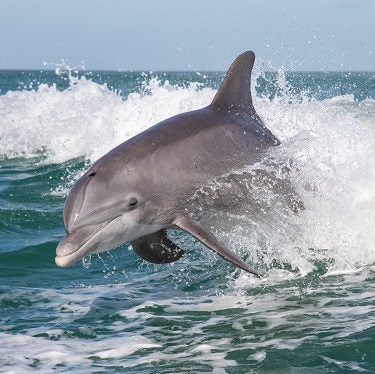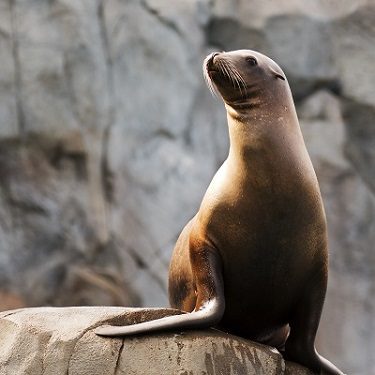Marine Life Encyclopedia
Sea Turtles & Reptiles
Olive Sea Snake
Aipysurus laevis
Distribution
Tropical western Pacific Ocean from northern Australia to New Guinea and surrounding island groups
eCOSYSTEM/HABITAT
Coral reefs
FEEDING HABITS
Active predator
TAXONOMY
Order Squamata (snakes and lizards), Family Elapidae (sea snakes and relatives)
The olive sea snake is the most common sea snake along the northern coast of Australia and nearby island groups. It is a true snake and gets its common name from the color of its skin. Like all reptiles, olive sea snakes breathe air, but unlike the sea turtles, crocodiles, sea kraits, and other marine reptiles – which must nest on shore – the olive sea snake’s entire life cycle occurs in the ocean.
Growing to lengths over six feet (2 m), this species is well adapted to a life on coral reefs. It has a flattened, paddle-like tail and a large lung that allows it to go hours between breaths at the surface. Given its length, it has special light sensing organs in the tail that allow it to remain totally hidden, including the tail, in its preferred hiding places among the reef, during daylight hours.
The olive sea snake is a highly venomous snake that actively hunts small to medium sized fishes and benthic invertebrates, including prawns and crabs. It prefers to hunt at night and only comes out of its daytime hiding places to take occasional breaths. Olive sea snakes are naturally curious and are known to approach SCUBA divers, not aggressively but inquisitively, especially at night. Though they only rarely bite people, their bites have been known to be fatal. Olive sea snakes do not leave the water to nest or for any reason at all. This species reproduces via internal fertilization and gives live birth to a few (6-8) well-developed young that do not receive any parental care. The young are significantly darker than adults and develop the olive/brown color as they mature. Large bony fishes, sharks, and predatory birds are known to eat juvenile and even adult olive sea snakes.
Olive sea snakes are not fished by people, but they are at risk of accidental capture by fishers targeting other species – particularly bottom trawlers. This species prefers to venture off of the reef, at night, to hunt for bottom dwelling prey that is also targeted by fishers. This behavior increases their likelihood of being accidentally captured. Though scientists generally believe some populations of olive sea snakes to be decreasing, it is considered a species of least concern across its entire distribution.
Fun Facts About Olive Sea Snakes
1. Olive sea snakes are one of the most commonly found sea snakes on Australia’s coral reefs.
2. Olive sea snakes can be found up to 230feet (70 m) below sea level, but typically live in shallow reef flats 32 to 131 feet (10 to 40 m) deep.1
3. Olive sea snakes can grow to be 6.5 feet (2 m) long.
4. Olive sea snakes can spend up to two hours underwater before returning to the surface to breathe.
5. Like land snakes, olive sea snakes must shed their skin and do so by rubbing it against hard coral or rocks to loosen it first. Skin shedding is not only helpful for growth, but also rids olive sea snakes of algae, barnacles and bryozoans.2
Engage Youth with Sailors for the Sea
Oceana joined forces with Sailors for the Sea, an ocean conservation organization dedicated to educating and engaging the world’s boating community. Sailors for the Sea developed the KELP (Kids Environmental Lesson Plans) program to create the next generation of ocean stewards. Click here or below to download hands-on marine science activities for kids.
References:
2 Australian Government Department of the Environment and Energy
Get Involved

Donate Today
SUPPORT OUR WORK TO PROTECT THE OCEANS BY GIVING TODAY
With the support of more than 1 million activists like you, we have already protected nearly 4 million square miles of ocean.

TAKE ACTION NOW
Support policy change for the oceans
Decision-makers need to hear from ocean lovers like you. Make your voice heard!

VISIT OUR ADOPTION CENTER
SYMBOLICALLY ADOPT AN ANIMAL TODAY
Visit our online store to see all the ocean animals you can symbolically adopt, either for yourself or as a gift for someone else.

DOWNLOAD OCEAN ACTIVITIES
HELP KIDS DISCOVER OUR BLUE PLANET
Our free KELP (Kids Environmental Lesson Plans) empower children to learn about and protect our oceans!




